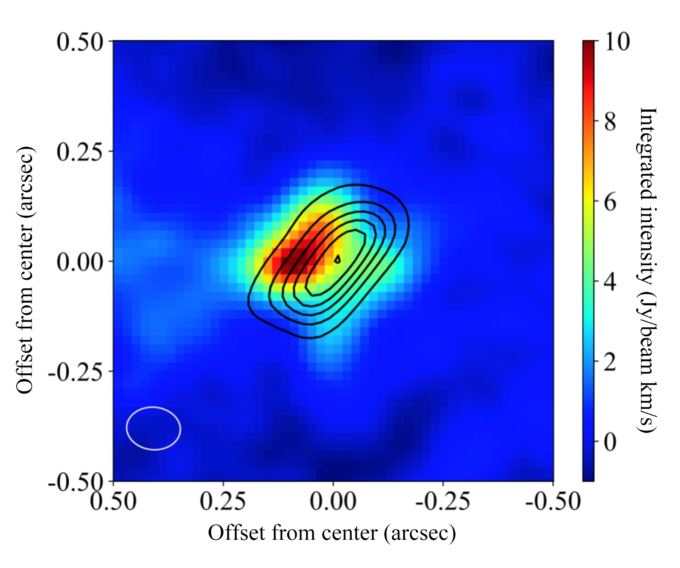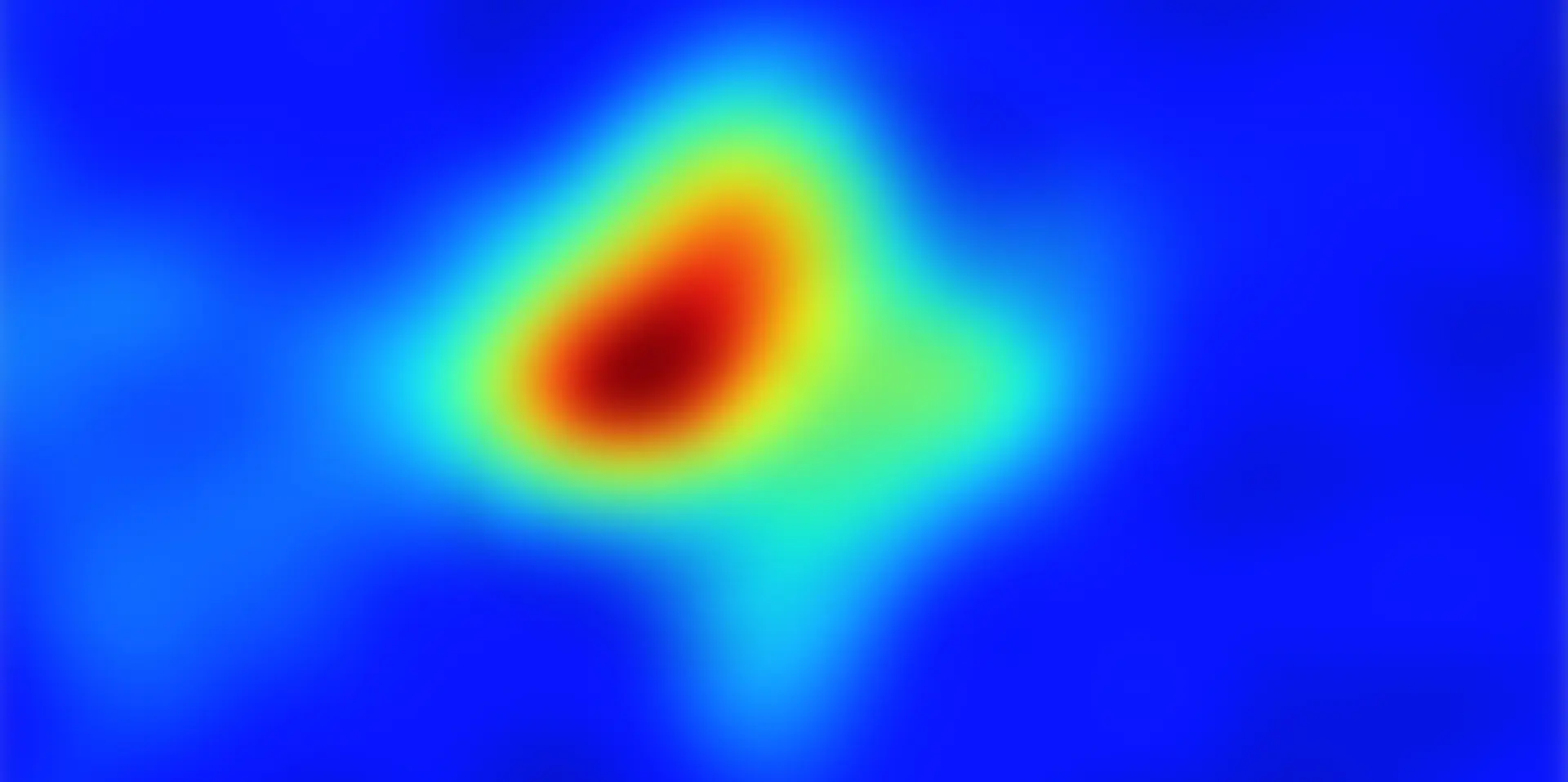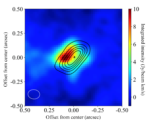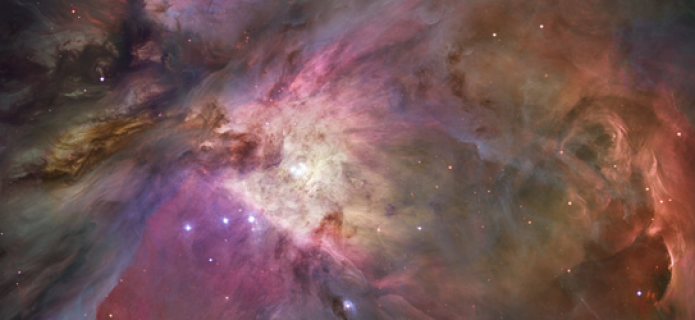ALMA Discovers Aluminum around a Young Star
Researchers using ALMA data discovered an aluminum-bearing molecule for the first time around a young star. Aluminum-rich inclusions found in meteorites are some of the oldest solid objects formed in the Solar System, but their formation process and stage is still poorly linked to star and planet formation. The discovery of aluminum oxide around a young star provides a crucial chance to study the initial formation process of meteorites and planets like the Earth.
Disks of gas surround young stars. Some of the gas condenses into dust grains which then stick together to form more substantial objects, building up to form meteors, planetesimals, and eventually planets. Understanding the formation of these first solid objects is essential for understanding everything which follows.
Shogo Tachibana, a professor at the University of Tokyo/Japan Aerospace Exploration Agency (JAXA), and his team analyzed the ALMA (Atacama Large Millimeter/submillimeter Array) data for Orion KL Source I, a massive young protostar, and found distinctive radio emissions from aluminum oxide (AlO) molecules. This is the first unambiguous detection of AlO around a young star.
“Aluminum oxide played a significant role in the formation of the oldest material in the Solar System,” says Tachibana “Our discovery will contribute to the understanding of material evolution in the early Solar System.”
Interestingly, the radio emissions from the AlO molecules are concentrated in the launching points of the outflows from the rotating disk around the protostar. In contrast, other molecules such as silicon monoxide (SiO) have been detected in a broader area in the outflow. Typically, the temperature is higher at the base of the outflows and lower in the downstream gas. “Non-detection of gas-phase AlO downstream indicates that the molecules have condensed into solid dust particles in the colder regions,” explains Tachibana. “Molecules can emit their distinctive radio signals in gas-phase, but not in solid-phase."
ALMA’s detection of AlO in the hot base of the outflow suggests that the molecules are formed in hot regions close to the protostar. Once moved to colder areas, AlO would be captured in dust particles which can become aluminum-rich dust, like the oldest solid in the Solar System, and further the building blocks for planets.
The team will now observe other protostars looking for AlO. Combining the new results with data from meteorites and sample return missions like JAXA’s Hayabusa2 will provide essential insights into the formation and evolution of our Solar System and other planetary systems.
Additional Information
These observation results were published as Tachibana et al. “Spatial distribution of AlO in a high mass protostar candidate Orion Source I” in the Astrophysical Journal Letters on April 24, 2019.
The research team members are: Shogo Tachibana (The University of Tokyo), Takafumi Kamizuka (The University of Tokyo), Tomoya Hirota (National Astronomical Observatory of Japan / SOKENDAI), Nami Sakai (RIKEN), Yoko Oya (The University of Tokyo), Aki Takigawa (Kyoto University), and Satoshi Yamamoto (The University of Tokyo)
This research was supported by MEXT/JSPS KAKENHI (Nos. 25108002, 25108005, and 17K05398).
The Atacama Large Millimeter/submillimeter Array (ALMA), an international astronomy facility, is a partnership of the European Organisation for Astronomical Research in the Southern Hemisphere (ESO), the U.S. National Science Foundation (NSF) and the National Institutes of Natural Sciences (NINS) of Japan in cooperation with the Republic of Chile. ALMA is funded by ESO on behalf of its Member States, by NSF in cooperation with the National Research Council of Canada (NRC) and the Ministry of Science and Technology (MOST) in Taiwan and by NINS in cooperation with the Academia Sinica (AS) in Taiwan and the Korea Astronomy and Space Science Institute (KASI).
ALMA construction and operations are led by ESO on behalf of its Member States; by the National Radio Astronomy Observatory (NRAO), managed by Associated Universities, Inc. (AUI), on behalf of North America; and by the National Astronomical Observatory of Japan (NAOJ) on behalf of East Asia. The Joint ALMA Observatory (JAO) provides the unified leadership and management of the construction, commissioning and operation of ALMA.
Image

ALMA image of the distributions of AlO molecules (color) and warm dust particles (contours). The molecular outflow (not shown in this image) extends from the center to the top-left and bottom-right. Credit: ALMA (ESO/NAOJ/NRAO), Tachibana et al.
Contacts
-
Nicolás Lira
Education and Public Outreach CoordinatorJoint ALMA Observatory, Santiago - ChilePhone: +56 2 2467 6519Cel: +56 9 9445 7726Email: [email protected] -
Masaaki Hiramatsu
Education and Public Outreach Officer, NAOJ Chile -
Charles E. Blue
Public Information OfficerNational Radio Astronomy Observatory Charlottesville, Virginia - USAPhone: +1 434 296 0314Cel: +1 202 236 6324Email: [email protected] -
Calum Turner
ESO Assistant Public Information Officer


